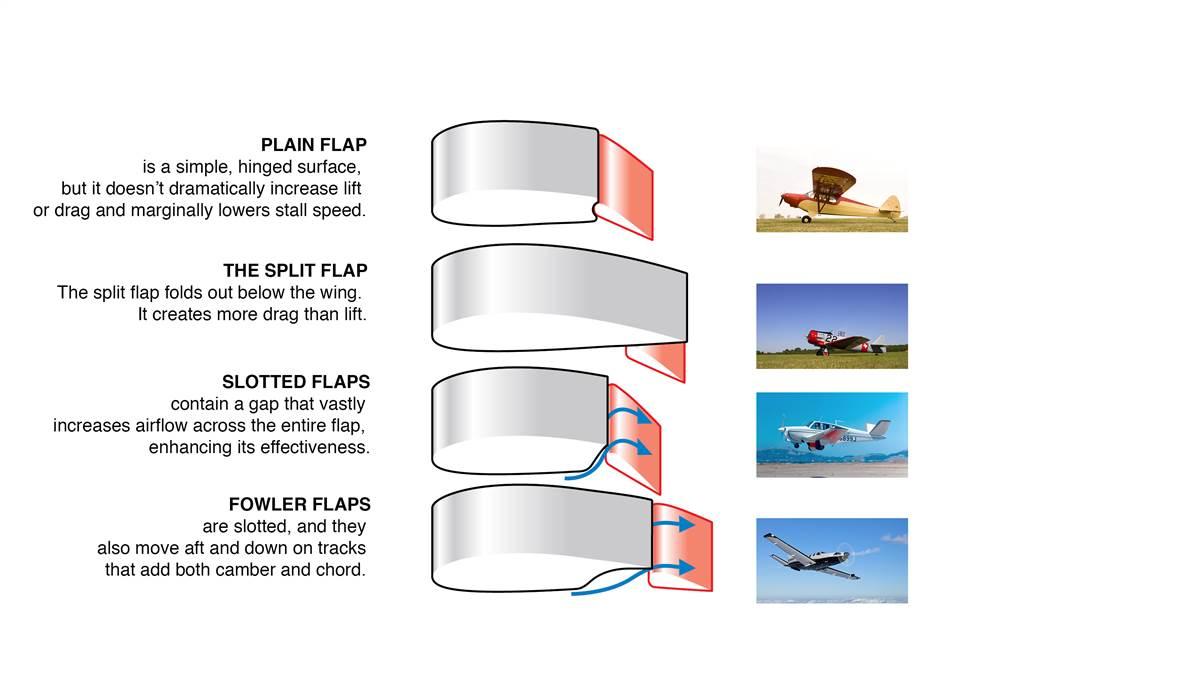
Flaps are aviation’s original transformers. They allow an aircraft wing to change shape in flight, and that lets pilots optimize them for each phase: takeoff, climb, cruise, approach, and landing.
Flaps add camber, and sometimes area, to the wing. And that creates both more lift, and more drag. Flaps typically lower an airplane’s stall speed, and they allow airplanes to descend at steeper angles without gaining speed.
The use of partial or “lift” flaps is often encouraged when taking off from soft or rough runways. Flaps usually shorten the ground roll at the expense of a lower rate of climb.
The great flap debate
Full flaps are typically used for landings, but not always. Full flaps allow slower approach speeds and steeper approach angles, but there are drawbacks, too, particularly when landing lightly wing-loaded airplanes in strong, gusty crosswinds. That’s because flaps increase lift, and that can be a problem if a gust lifts the upwind wing during rollout. Also, flaps accentuate the tendency for airplanes to weathervane into the wind, increasing the possibility for a loss of directional control on rollout. Flaps also reduce the weight on the aircraft wheels during rollout, making brakes less effective. Consult the pilot’s operating handbook for specific information on proper flap use in the aircraft you fly.



